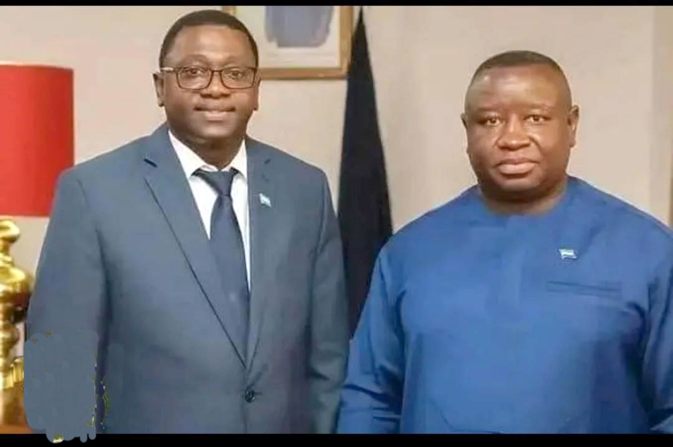
The economic reform agenda adopted by the New Direction Government following the assumption of power in April 2018 created a conducive environment for the revival of the Sierra Leone economy. However, the multiple and overlapping external shocks including the COVID-19 pandemic in 2020 followed by the spillovers from the Russia Ukraine war in 2022 reversed the gains made in stabiliSing the economy in earlier years, 2018 and 2019.
Macroeconomic performance weakened during 2020-2022 characterised by wider budget deficits, spiralling inflation, weak current account positions, sharp depreciation of the Leone and high debt levels. The adoption of fiscal consolidation in 2023 and 2024, which compliments the tight monetary policy stance of the Bank of Sierra Leone yielded positive results: the macroeconomic situation is improving with narrowing fiscal and trade deficits, sharp decline in inflationary pressures and a relatively stable currency. The challenge going forward is to maintain these gains amid a turbulent and uncertain external environment.
This article reviews macroeconomic performance in the pre and immediate post COVID-19 period 2018-2022. The first part of the articles focuses on the impact of external shocks on the performance of the economy during the period.
The second part describes prudent economic policies implemented in 2023 and 2024 to restore macroeconomic stability and the results achieved so far. The third part of the article describes the sectoral policies being implemented to boost the resilience of the economy in the context of the Medium-Term National Development Plan. Some of the information in this article are excerpts from interviews with the current Minister of Finance, Sheku Ahmed Fantamadi Bangura and the Government Budget and Statement of Economic and Financial Policies, which he presented to Parliament on November 15, 2024.
The Impact of shocks on the Performance of the Sierra Leonean Economy
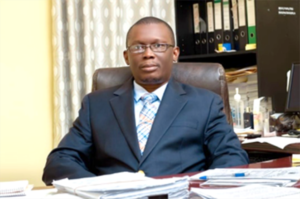
The Sierra Leone economy recovered strongly, growing by 5.3 percent in 2019 from 3.5 percent in 2018. The recovery was, however, short-lived as the COVID19 pandemic broke out in 2020. The restrictions imposed to contain the pandemic adversely affected economic activities and as a result, the economy contracted by 2.0 percent in 2020.
Following the relaxation of pandemic-related restrictions, resumption of iron ore production, and gradual normaliSation of global supply chain disruptions, the economy rebounded strongly by 4.1 percent in 2021. The recovery from the COVID-19 pandemic was again disrupted by the Russia- Ukraine war, which broke out in early 2022. Despite the resumption of iron mining and increase in agricultural output, the surge in food and energy prices, disruption in supply chains and general economic uncertainty caused by the Ukraine crisis culminated in the weakening of economic activities. Economic growth slowed down to 3.6 percent in 2022.
Inflation surged in early 2020 due to panic buying following the announcement of the first COVID-19 lockdown. However, the uninterrupted supply of essential goods supported by the BSL Special Credit Facility as part of Government’s response to the impact of COVID-19 and the relative stability of the Leone resulted in the easing of inflationary pressures later in 2020. Inflation declined to 10.4 percent in December 2020 from 13.9 percent in December 2019. Inflation continued to decline reaching a single digit of 8.9 percent in March 2021.
However, inflationary pressures re-emerged in the second half of 2021 as bank financing increased following the premature withdrawal of COVID related financial support. This combined with the uncertainty associated with the announcement on the re-denomination of the Leone led to sharp depreciation of the Leone. Consequently, inflation rose to 17.9 percent in 2021. Inflation continued to rise in 2022 amid adverse external development underpinned by further disruption of global supply chains, increased freight and shipping cost, post-pandemic hikes in international food and energy prices caused by the war in Ukraine coupled the continuous depreciation of the exchange rate.
These factors coupled with monetary expansion due to increased central bank financing of the wider budget deficit continued to fuel inflation, which rose to 37.1 percent in December 2022.
Public finances improved in 2018 and 2019 following the implementation of Executive Orders 1 and 2, which focused on revenue mobiliSation and expenditure control, respectively. One of the key revenue measures was the operationaliSation of the Treasury Single Account (TSA), which required all Ministries, Departments and Agencies (MDAs) that were collecting and holding on to Government revenues to transfer those revenues into the Consolidated Revenue Fund. Government also adopted a full pass-through petroleum pricing formula to protect excise duties from movements in the international oil prices and the exchange rate.
At the same time, Government streamlined the process of paying excise duty on petroleum products by Oil Marketing Companies (OMCs) by requiring them to pay the duties at the point of uplifting the products at the depots.
These and other measures resulted in an increase in domestic revenue to 13.8 percent of GDP in 2018 and further to 14.6 percent of GDP in 2019 after stagnating at 12.3 percent of GDP in 2016 and 2017. Several expenditure rationaliSation measures including reforms to improve the transparency and predictability of the wage bill and curtailing some wasteful expenditures also led to a reduction of Government expenditure to an average of 22 percent of GDP in 2018 and 2019. As a result, the budget deficit, including grants, narrowed to 5.8 percent of GDP in 2018 and further down to 3.1 percent of GDP in 2019 from 8.8 percent of GDP in 2017.
Unfortunately, the COVID-19 pandemic broke out in early 2020 and Sierra Leone registered the index case in March 2020. The contraction in economic activities due to the restrictions imposed to contain the spread of the disease and granting of tax relief to assists businesses in coping with the crisis, resulted in a drop in domestic revenues to 13.8 percent of GDP in 2020 from 14.6 percent in 2019. In tandem, Government expenditure rose sharply to implement the Quick Action Economic Response Programme (QAERP) designed to mitigate the impact of the pandemic on lives and livelihoods. The budget deficit rose to 5.8 percent of GDP in 2020 as COVID-related budget support declined.
Despite the recovery of domestic revenues to 15.7 percent of GDP in 2021 as economic activities recovered coupled with the one-off payment of iron ore royalties of US$20.0 million by Marampa iron Ore Company, the budget deficit, including grants, widened to 7.4 percent of GDP in 2021. This was mainly due to the continuous increase in expenditures to 28.4 percent of GDP in 2021 as Government sustained the response to the lingering impact of COVID-19 pandemic in the face of declining COVID-related budget support.
The situation was exacerbated by the outbreak of the Russia-Ukraine war in early 2022. The economic uncertainty associated with Ukraine crisis, adversely affected domestic revenue collection and exacerbated pre-existing COVID-19 vulnerabilities including the surge in the international prices of food and energy and depreciation of the Leone and their pass-through effect to domestic prices. These developments combined with the loss of petroleum excise revenues due to delays in adjusting domestic fuel pump prices, and the loss of royalties due to the ban on timber exports, led to drop in domestic revenue to 13.0 percent of GDP in 2022.
Government expenditure continued to increase to 30.8 percent of GDP in 2022 due to the impact of higher inflation and depreciation of the Leone on the various expenditure categories. In particular, spending on goods and services, energy subsidies and domestic capital expenditures were higher than budgeted. As a result, the overall budget deficit, including grants, widened further to 10.5 percent of GDP in 2022. The deficit was financed largely by borrowing from the domestic banking system estimated at 7.9 percent of GDP in 2022.
Given the increase in borrowing to finance the budget deficits, the stock of public debt increased from 69.8 percent of GDP in 2018 to 79.8 percent of GDP in 2021 and further 98.9 percent of GDP in 2022. Of this, external debt increased to US$1.99 billion (51.1 percent of GDP) in 2021 and 67.7 percent of GDP in 2022 from US$1.68 billion (44.2 percent of GDP) in 2019. Domestic debt decreased to US$1.11 billion (28.7 percent of GDP) in 2021 and 31.3 percent of GDP in 2022.
Restoring Macroeconomic Stability

Recognising the far-reaching implications of an unstable macroeconomic environment on the well-being of Sierra Leoneans as well as for donor and investor confidence, we took bold measures in 2023 to correct the policy slippages and restore macroeconomic stability, says the Minister of Finance, Sheku Fantamadi Bangura in an interview with A-Z Multi Media.
“We introduced fiscal consolidation to restore macroeconomic stability”, Minister Bangura emphasized. By this I mean, we intensified domestic revenue mobilization and prudently managed public expenditures. To boost domestic revenue collection, we developed a Medium-term Revenue Strategy (MTRS) that outlined the tax policy and revenue administration measures, we will be implementing over the next five years, 2023-2027.This is our blue print for domestic revenue mobilization for the medium-term. The implementation of the MTRS commenced with the Finance Act 2023, which was ratified by the House of Parliament in July 2023. Government also introduced the Finance Act 2024 to implement additional revenue measures from the MTRS. Most measures in these Finance Acts are being implemented, except for a few due to technical difficulties, Minister Bangura explained.
The implementation of the Finance Acts of 2023 and 2024, enhanced tax compliance measures, vigorous outreach and tax education programme resulted in improved domestic revenue collection. Domestic revenues increased to 7.9 percent of GDP in 2023 from 7.2 percent of GDP in 2022. The
On expenditure management, Minister Bangura revealed that Government introduced new measures to manage the wage bill while building on previous reforms; improved budget execution by strengthening cash management, public procurement and the management of the capital budget processes. Total expenditure declined to 18.9 percent in 2023 from 19.9 percent in 2022. The budget deficit, including grants, narrowed to 5.3 percent of GDP in 2023. The domestic primary balance narrowed to 2.9 percent of GDP.
The improved fiscal performance continued in 2024 with domestic revenue exceeding the target for the first half (January to June) of the year. performance continued in 2024. The variance between budgeted and actual expenditure was within tolerable limits as the Government wage bill, interest payments and domestic funded capital expenditures were lower than their respective budgeted amounts, compensating for the overrun on subsidies and transfers. The overall budget deficit, including grants, narrowed to 1.6 percent of GDP in the first half of 2024, and is on track in meeting the target for the year as a whole of 3.2 percent of GDP, Minister Sheku Bangura explained.
This prudent fiscal posture in 2023 and 2024, which complimented the tight monetary policy stance of the Bank of Sierra Leone has begun to yield positive results: In addition to the narrowing fiscal deficit, the trade deficit is also decreasing; inflation is declining at a rapid pace, the Leone has been relatively stable. The economy has also remained resilient and is estimated to have expanded by 5.7 percent in 2023 supported by increased mining, agricultural and manufacturing output as well as favourable terms of trade- Minister Bangura confidently asserted.
The economy is also on track in attaining the projected growth rate of 4.0 percent for 2024 on the back of increased economic activities as revealed by the the Composite Index of Economic Activity (CIEA) computed by the Bank of Sierra Leone coupled with improving business sentiments, declining inflation, increase in commercial banks credit to the private sector and increase in exports.
Inflation has dropped to 20.2 percent in September 2024 from the peak of 54.5 percent owing to the prudent fiscal and monetary policies, a stable Leone, declining global energy prices combined with increase in domestic food production- Minister Bangura further explained in his comprehensive 2025 Budget and Statement of Economic and Financial Policies
The performance of the external sector also improved in 2023 and the first half of 2024 on the back of strong growth in exports. The trade deficit decreased to US $481.4 million from US$594.5 million in 2022. The trade deficit also narrowed in the first half of 2024 to US$248.1 million from US$286.4 million for the corresponding period in 2023.
These developments, coupled with removal of barriers in forex transactions by the Bank of Sierra Leone have also contributed to the stability of the Leone since the second half of 2023.
Boosting the Resilience of the Economy with the Big Five Game Changers
Building economic resilience also requires the design and implementation of sectoral policies to address the food insecurity, invest in human capital development and infrastructure as well as diversify the economy.
Tackling Food Insecurity
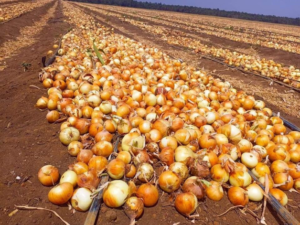
As part of efforts to boost the resilience of the economy against external shocks while promoting sustainable and inclusive green growth, Government developed the Medium-Term National Development Plan (MTNDP), 2024-2030, which was launched in early 2024. The MTNDP prioritized Agriculture and Food Security as the top priority of Government for the next six years in recognition of the worsening food insecurity situation, attributed mainly to the surge in global food prices due to supply disruptions caused by the Russia-Ukraine war. Accordingly, Government through the Ministry of Agriculture and Food Security and with support from development partners formulated the FEED Salone Initiative, as the flagship programme.
According to the Minister of Agriculture and Food Security, Dr. Henry Musa Kpaka, the FEED Salone programme was designed to boost agriculture productivity to fuel inclusive growth, increase local food production and reduce our dependence on food import, reduce hunger, increase export earnings, create jobs, and build resilient food system.
He further explained that the Strategy is anchored on five strategic pillars: (i) Mechanization (ii) Seeds and Inputs System Aggregation, Processing and Marketing (iii) Access to Finance Agricultural Technology (Ag.Tech) and Climate Smart Agriculture (CSA) Empowering Women and Youth.
The Feed Salone strategy focuses on boosting the production of specific food crops, value chains and geographies, strategic investments in infrastructure, targeted policy interventions to make local production more competitive across strategic value chains, and a blended financing model, where the government combines its own resources and that of the partners to attract private capital.
Minister Kpaka emphasized that the Strategy prioritizes private sector-driven growth. It recognises the existing challenges to the sector, supports the expansion of existing businesses already participating in key value chains whilst also encouraging new players by fostering entrepreneurship through agri-business incubation. These platforms will offer training, seed capital, and financial tools for business readiness. The strategy also seeks to attract both local and foreign investments, with agro-industrial zones catering specifically to foreign direct investment for large-scale agriculture.
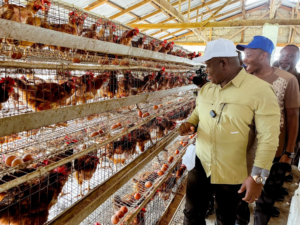
To facilitate the effective implementation of the Feed Salone programme, Government established a governance structure comprising:
- A Presidential Council guiding the delivery of the Feed Salone Strategy;
- The Feed Salone Secretariat to provide technical and administrative backstopping to the Council and the Ministry of Agriculture and Food Security; and
iii. Systems and processes that encompass active advisory services to farmers, collaboration with the private sector, robust data collection mechanisms and reporting systems.
The Ministry of Agriculture and Food Security provided the following progress report on the implementation of the FEED Salone Programme to the Presidential Council in October 2024.
Under Mechanisation and Irrigation, Government through the Ministry of Agriculture rehabilitated 1,950 hectares of Inland Valley Swamps (IVS); distributed machinery, including 200 rice mills, 142 rice threshers, 144 combine harvesters, and 3 landing crafts to farmers. With support from BADEA and the Islamic Development Bank, Government is also developing 5,000 ha of irrigation infrastructure in Tormabum. The Initiative has also facilitated the cultivation of 23,437.903 hectares of land across the country.
Under Strengthening of Seed Systems, the Ministry of Agriculture and Food Security organized the Seed Business Summit and developed the Seed System Transformation Roadmap. Following this, the Ministry partnered with SLARI for seed multiplication. The International Institute for Tropical Agriculture provided 6 tons of soybean and 4 tons of maize foundation seeds to the Ministry of Agriculture to be multiplied and distribute to farmers. Demonstration plots for soybean growth established across 8 districts. In addition, 20MT of foundation seeds supplied to certified rice growers and 4million coca seedlings, 1,000 plantain suckers supplied to farmers.

Under Aggregation, Processing and Market Linkages, Government with support from the World Bank under the Small Holders Commercialisation and Agribusiness Development project (SCADEP), is constructing four rural bridges in Kaliahun, Karene, Bonthe and Pujehun Districts and 200 kilometers of feeder roads to enhance connectivity and market access.
Under the Nutrition and Food Security efforts, the Ministry of Agriculture is focusing on nutrient-rich crops like orange-fleshed sweet potatoes and yellow-fleshed cassava for school feeding programs.
To improve access to finance for farmers, the Ministry of Agriculture worked with the Bank of Sierra Leone to launch a $10 million Agriculture Credit Facility with low-interest rates for rice, onion, and poultry farmers. The World Bank funded FSRP also provided $7.9 million in matching grants through the FSRP for rice, cassava, and livestock projects. The EU provided US$7 million credit and UNDP US$3 million grants resources under Salone Access to Finance (grants and crop insurance products to better protect farmers against climate risks, among others. The Islamic Development Bank also provided US$2 million interest free loan facility to support for Agribusiness in rice in the rice value chain. The Government and its partners have mobilized over $1 billion in funding and technical support, including pledges from international partners including BADEA, OPEC Fund, AfDB, IsDB, and others. For example, Government has signed a Financing Agreement with OPEC and ISDB for a US$100 million facility to support the expansion of the Livestock Sector and US$60 million with IDB for Cassava Industrialisation Project.
The Ministry of Agriculture is also supporting women engaged in agricultural activities through the Empowering West African Women Small & Medium Enterprises (EWASME) Program, providing $2.4 million in support for women-led businesses in the rice value chain. The Ministry is also piloting 12 fish ponds in collaboration with the Ministry of Fisheries and Marine Resources and the Ministry of Youth, targeting young people across 8 districts to diversify their income sources and improve their livelihoods.
These efforts are beginning to yield positive results including a 16 percent reduction in rice imports, 34 percent decrease in onion imports, 13 percent reduction in chicken import, and 25 decrease in egg imports, thereby saving foreign exchange.
(ii) Sustaining Human Capital Development
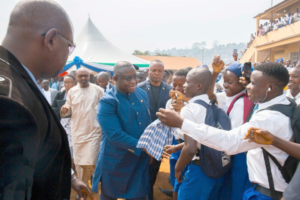
Human capital development remains a key priority even though it is no longer the flagship programme of Government. It ranked second among the top five priorities of Government outlined in the medium-Term National Development Plan, 2024-2030.
(a) Supporting Education to improve the Quality of the Sierra Leonean Workforce
A resilient economy requires a skilled workforce. This is why Government introduced the Free Quality School Education (FQSE), which was the flagship programme of Government during the first term of President Bio’s administration (2018-2023). The FQSE remains a priority of Government. As a manifestation of that commitment, Government continued to allocate 20 percent of primary expenditures to the education sector. Under the FQSE programme, Government continues to pay school fees subsidy for children in primary and junior secondary school, examination fees for public examinations including the National Primary School Examination (NPSE), Basic Education Certificate Examinations (BECE) and the West African Secondary School Certificate Examinations (WASSCE; procure and distribute teaching and learning materials; rolled out school feeding programme, and provides subsidized school transportation. These interventions have led to an increase in primary school enrollment by an additional two million school children. The retention and pass rates have also been improving.
In addition, Government has also been developing and implementing policies to lay the foundation for inclusive and quality primary and basic education. With support from development partners, Government developed the Education Sector Plan, 2022-2026. Other policies include Radical Inclusion Policy; Integrated Early Childhood Development Policy; School Feeding Policy; Teacher Management Policy
To promote the development of technical and higher education, Government has also reviewed and updated several legislations including the Tertiary Education Commission Act of 2001 and National Council for Technical Vocational and other Awards (NCTVA) Act 2004. Government developed and is implementing the frame work for National Science and Technology Innovation Policy and the Dual Apprenticeship Policy and Act.
Government has also established and operationalized the Kono University of Science and Technology and upgraded the existing six Technical and vocational Institutions (TVET). These TVET institutions are also being provided with modern teaching and learning materials. Furthermore, Government has also introduced a Student Loan Scheme to support less privileged students who desire to pursue higher education.
Furthermore, Government is investing in education infrastructure to enhance the learning environment for higher education including construction and rehabilitation of lecture halls, student hostels at the Eastern Technical University, Bunumbu Campus, Milton Margai Technical University at the Goodrich and Brookfields Campuses.
(b) Improving Health Care to boost the Productivity of the people of Sierra Leone
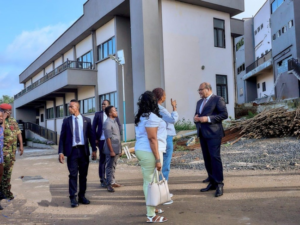
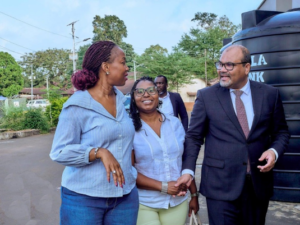
The productivity of the work force is critical to boosting the resilience of the economy. In this context, the Government of Sierra Leone is taking actions to improve health service delivery with a focus on primary health care in order to build a healthy work force right from the beginning of life. To this end, Government implementing the Universal Health Coverage through the Life Stages Approach. Government also launched the Sierra Leone Child Survival Action Plan.
To build the resilience of the health systems against pandemics and epidemics, Government also established National Public Health Agency to coordinate, prevent, detect and rapidly respond to health threats.
Government with support from development partners is also investing in health infrastructure. Some of the investments including the rehabilitation of 16 district hospitals and the installation of solar panels in 6 hospitals and 200 Public Health Units (PHUs). These interventions have contributed to the improvements in health outcomes including a significant drop in maternal mortality rates.
Supporting the Extremely Poor and vulnerable
Like most low-income countries in Africa, Sierra Leone is also experiencing a cost of living crisis in recent years due to the spillovers of the -Ukraine war on the economy, which contributed to the high inflation and sharp depreciation of Leone.
In recognition of the impact of these developments on the poor and vulnerable, Government has been rolling out social safety nets including cash transfers and labour intensive public works. With support from development partners, Government has provided emergency cash transfers to 43,000 poor households and to 8,702 households with persons aged 75 years and above.
Infrastructure Development
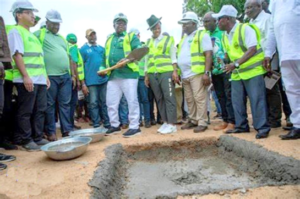
Government is also investing infrastructure to boost the resilience and competitiveness of the economy. of the economy.
In the road sector, Government with support from development partners and Public Private Partnerships (PPPs) has completed the construction of several roads including the Lumley Tokeh, Hill Side Bye-pass Roads, Calaba Town-Masiaka Road, Moyamba-Junction to Moyamba, Gberay Junction- Pamlap and Kenema- Kailahun Roads. The construction, reconstruction and rehabilitation of several roads is also on-going. These include Kpetema-Mattru Jong Road, Targrin-Lungi-Konakridee Road, Kabala-Falaba-Limbaya Junction to the Guinea Border. The rehabilitation of city and township roads in on-going in Freetown, Bo, Makeni, Kenema, Moyamba, Pujehun, Mattru-Jong, and Bonthe.
In the energy sector, the restoration of electricity supply in seven districts’ headquarter towns is at an advanced stage. Thermal plants have been installed in two of the seven districts-Moyamba and Kailahun while transmission lines have been stringed in the other district towns including kambia, Kabala, Pujehun, Bonthe and Mattru Jong. The construction of 6MW solar power in Newton has been completed and commissioned. Government has also commissioned the 225kV CLSG Transmission Line from Liberia to Kenema/Telorma substation, which has facilitated the provision of electricity to Bo and Kenema cities and several villages along the transmission lines.
Government has also completed the stringing of transmission lines from Mano-junction to Bumbuna and the construction of Substations completed at Telorma, Bekongor/Bumpeh, Yiben, Fadugu and Kamakwie. This has facilitated the transmission of electricity to the OCTEA Mining Company in Koidu through the Bekongor/Bumpeh Substation.
With the support of the World Bank, Government is in the process of procuring 40 Megawatts of solar energy, of which 30 MW will be installed at Newton and 10 Megawatts in Lungi.
Government is also encouraging the private sector to participate in electricity generation. Mielele partners have secured funding from the United States International Development Corporation for the construction of a 128 MGW in Freetown. The project was launched in Freetown earlier this year following ratification of the Power Purchase Agreement.
Diversifying the economy
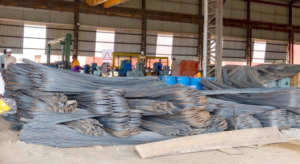
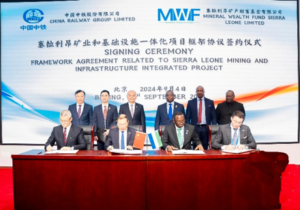
Government’s strategy to boost the resilience of the economy against the adverse external shocks is to diversify the economy. This involves improving the business environment to support the growth of local businesses while attracting foreign direct investments; support small and medium-sized enterprises and promote investments in other non-mining sectors such as tourism and fisheries.
As part of efforts to improve the business environment, Government established the National Investment Board (NIB) as a one stop shop for all investment related activities. The NIB encompasses the activities of the former Sierra Leone Export and Investment promotion Agency (SLIEPA) The NIB will undertake business regulatory reforms to reduce the cost and time of doing business to make Sierra Leone an attractive investment destination.
Government has also been taking strides to support Small and Medium enterprises given their potential to contribute to economic growth and employment creation. The World Bank funded Sierra Leone Economic Diversification Project in collaboration with the Small Medium Enterprises Development Agency (SMEDA) has provided capacity building and financial support to over 100 SMEs.
Recognising that access to finance has been the major constraint to the expansion and growth of SMEs, Government established the MUNAFA Fund. The Fund is being implemented through financial service providers such as Microfinance Institution and has benefitted hundreds of SMEs.
Government is also investing in the tourism sector given its potential to contribute to sustainable economic growth and job creation. With support from the World Bank, Government is developing the three tourism sites at Leicester peak, Tacugama Sanctuary and Bureh Beach.

